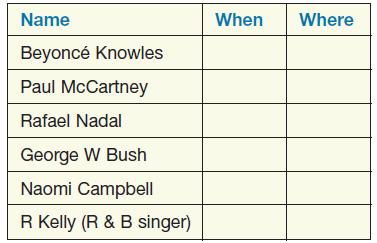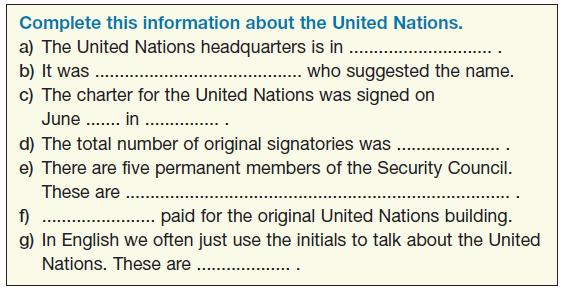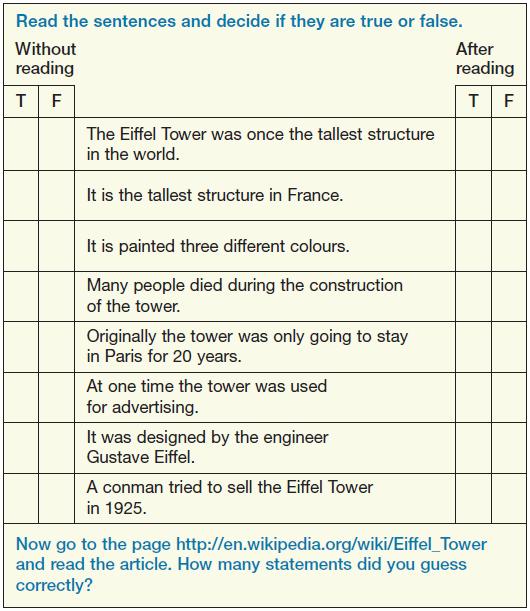Russell Stannard works with Wikipedia.
I have recently been doing a new series of experimental classes at the University of Westminster, UK. One thing I have been making good use of is the Wikipedia site (http://en.wikipedia.org), which has enabled me to produce a very successful collection of warmers and speed reading exercises. Essentially, I give the students a fact sheet that they have to fill in. I choose facts based around an interesting topic and structure the activity in such a way that the students, working in pairs, are able to complete some on their own but need to go to the website to complete the rest. To make it more interesting, I tell the students that as soon as they have completed all the facts, they must call out House! (one of the calls in the game of Bingo). When this happens, everyone must stop working and we check to see whether the particular pair has completed all the facts correctly.
Idea 1 (low level)
I like using the search engine in Wikipedia, and I am always amazed by how well it works. I did the following simple activity the other day: it was a great warmer and had the students reading and searching like mad. I put the students into pairs and gave them a list of famous people, telling them that they simply had to find out when and where they were born. All they needed to do was put the names in the search engine and then quickly complete the information. This activity is deceptively simple: it is actually much more difficult than it seems and even in a quite high-level class, students sometimes miss the information. It gives lots of practice in skimming and scanning. I really like this activity and I plan to do it again, but next time I will get the students to choose the people. Obviously my choices are a bit culturally biased. The whole idea of Wikipedia is that it is produced by ordinary people making contributions, so it is always growing. This means that it is really up to date and you can use the names of people who are popular and in the news at the moment.

Idea 2
The students work in pairs and are given this sheet to complete.

I move around the room and as soon as I can see that the students can’t fill in any more information, I tell them to log on to Wikipedia (http://en.wikipedia.org/wiki/History_of_the_United_ Nations#Facilities) so that they can complete the information. I make sure all the answers can be found on the one page. As soon as a pair has finished, they call out House! Other pages I have used include those giving information on Tom Cruise, Big Ben (this worked really well) and the Eiffel Tower. Just use the search facility to find topics.
Idea 3
A similar activity involves giving the students a sheet with eight or nine statements about a topic. The students work in pairs and have to decide if each statement is true or false. Afterwards they log on to the relevant Wikipedia page and check how many they got right. I did this successfully with the page about the Eiffel Tower.

Russell Stannard is a principal lecturer in ICT and Multimedia at the University of Westminster, UK. He is one of the authors of New Standard English, published by FLTRP China, which has recently been in the press for selling over a million copies. Russell has also worked on Macmillan’s Inside Out series.
This article first appeared in English Teaching Professional, Issue 48, 2007



